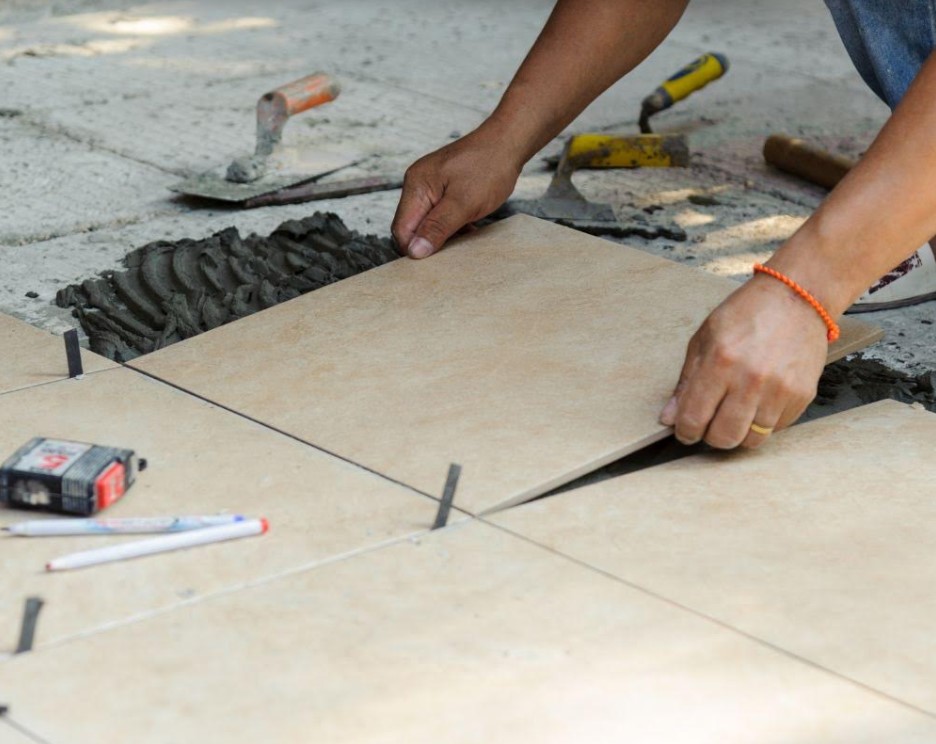
Tile flooring is a popular choice for many people. But have you ever wondered how eco-friendly a tile floor really is? In today’s world, think about the environmental impact of building materials is more important than ever.
Types Of Eco-Friendly Tile Flooring
There are several types of tile flooring that can be considered eco-friendly, each with its own benefits and production processes.
Ceramic tiles
Ceramic tiles are made from natural clay, sand, and water. They are molded into shape and fired at high temperatures. This process creates a durable and long-lasting product with minimal impact on the environment.
Recycled glass tiles
Recycled glass tiles are an excellent way to give new life to discarded glass materials. The production process involves melting down glass waste and forming it into beautiful, colorful tiles. By using recycled glass, we can reduce waste in landfills and conserve natural resources.
Natural stone tiles
Natural stone tiles such as slate, granite, and marble are quarried from the earth and cut into tiles. While the quarrying process can have some environmental impact, choosing responsibly sourced materials can help to minimize these concerns.
Factors That Contribute To The Eco-Friendliness Of Tile Floors
Tile flooring has several characteristics that contribute to its eco-friendliness:
Durability and long lifespan
One of the most significant environmental benefits of tile flooring is its durability. A well-installed and maintained tile floor can last for decades, reducing the need for frequent replacements and the associated waste.
Low maintenance requirements
Tile floors are easy to clean and maintain, which means using fewer chemicals and resources to keep them looking great. This has positive impact on both your indoor air quality and the environment.
Recyclability
Many types of tiles can be recycled at the end of life, reducing waste and providing raw materials for new products.
Energy efficiency in production and installation
Modern tile production methods have become more energy-efficient, and installing tile floors can also contribute to improved energy efficiency in your home by providing a natural thermal mass that helps regulate indoor temperatures. The folk at Devour Tools say that hiring a professional to install the tiles is preferable to doing it yourself. Tilers will get the job done in half the time, as they have the right tools with suitable metal blades. Professional tilers are skilled at what they do and will generate far less waste than DIYers.
Environmental Concerns And Areas For Improvement
Despite the eco-friendly aspects of tile flooring, there are some concerns and areas for improvement:
Energy consumption in production
The production of some types of tiles, particularly porcelain, can be energy-intensive due to the high firing temperatures required.
Transportation emissions
The transportation of tiles, especially those sourced from distant locations, can generate significant greenhouse gas emissions.
Potential for waste during production
Tile production processes can produce waste, particularly in the case of natural stone tiles where large amounts of material may be discarded during the cutting process.
Responsible sourcing of materials
It’s important to ensure that the materials used in tile production are sourced responsibly, with minimal impact on the environment and local communities.
Tips for eco-friendly installation and maintenance
To further reduce the environmental impact of your tile floor, follow these tips for eco-friendly installation and maintenance:
- Use environmentally friendly adhesives and grouts, such as those with low VOC (volatile organic compound) content.
- Properly dispose of waste materials generated during the installation process.
- Clean and maintain your tile floor with eco-friendly products.
- Repair or replace damaged tiles responsibly. If a tile becomes cracked or chipped, try to repair it rather than replacing the entire floor.
In conclusion, tile flooring can be an eco-friendly option when you choose the right materials, production methods, and installation techniques.

